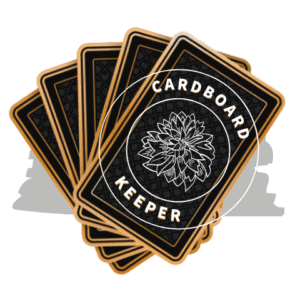With seemingly endless card options that introduce such a wide variety of gameplay mechanics, it can be overwhelming to keep track of all the possibilities. Especially for those who are new to Magic: The Gathering, it may be helpful to review some of the terms, like Monarch, that more experienced players are referencing.
The “Monarch” mechanic is a player designation that awards special status to the player with the title. When a player is the Monarch, they get to draw a card at the beginning of their end step. The Monarch is not a permanent designation, the title can be stolen or lost during the game.
As with most Magic mechanics, there are sets of rules and circumstances that surround a designation as Monarch. Check out this beginner’s guide to help you understand the ins and outs of this fascinating addition to MTG.
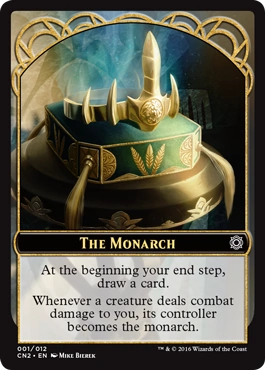
What Does the Monarch Mean in Magic The Gathering?
The “Monarch” is a player designation that can only be introduced into the game with certain cards. The “monarch” is not a card itself, but rather a role that is introduced when playing with certain cards. Thorn of the Black Rose and Crown-Hunter Hireling make a player the monarch when played by that player. Other cards like Queen Marchesa, Custodi Lich, and Skyline Despot also use this mechanic in the game.
The “Monarch” mechanic is a part of two different MTG card sets. Queen Marchesa, and therefore the monarch, is the focus of the Conspiracy: Take the Crown set. Queen Marchesa also shows up in Commander Legends, along with a lot of other cards that work in tandem with the monarch mechanic. Making the best gameplay of the monarch is according to your own preference but playing with cards from Commander Legends is a good option.
There are 31 different cards that involve the monarch in some way. In this collection of cards, all the colors are represented. The distribution is pretty even throughout colored cards that have the Monarch keyword.
- 6 Black
- 6 White
- 5 Blue
- 5 Red
- 4 Green
The rest of the monarch cards are multicolored, artifact, or land cards.
Monarch is not a super popular or common mechanic since it is only included in two sets, but it can definitely create an interesting game when plenty of supporting cards are involved.
Playing with the monarch can be a unique way to force a very political game, and also get extra cards while you’re at it.
What Can the Monarch Do?
There are two triggered abilities that come with being the monarch. The first ability is the big advantage that draws players to the role in the first place. The monarch gets to draw a card at the beginning of their end step. This gives them an extra card advantage over the other players in the game and can open up a lot of new and exciting possibilities for gameplay.
To receive this special status, the player much be the monarch at the beginning of their end step. If a player is monarch at the beginning of their turn but loses the designation before their next turn, they cannot draw the extra card during their end step. But if a player is not the monarch during the start of their turn, but gains the status during their turn, they will be able to draw a card at the beginning of their end turn.
The other ability associated with the monarch is the main way that the monarch switches between players. When the monarch receives combat damage, they lose their title as monarch. The monarch status is then immediately transferred to whichever player was in control of the creature that dealt damage to the monarch.
Typically, when an ability is triggered, whichever player activated the ability gets to be the controller. Whichever player was in control of an ability’s source is the ability controller. Or the owner of the ability’s source is the controller if there wasn’t anyone in control of the ability when it was triggered. The monarch mechanic provides an exception to the usual determination of control.
The triggered abilities of the monarch are considered to have no source. Whoever is the monarch when the abilities are triggered, is in control of the abilities. Even if the ability causes the monarch to switch between players, the original monarch, when the ability was triggered, controls it.
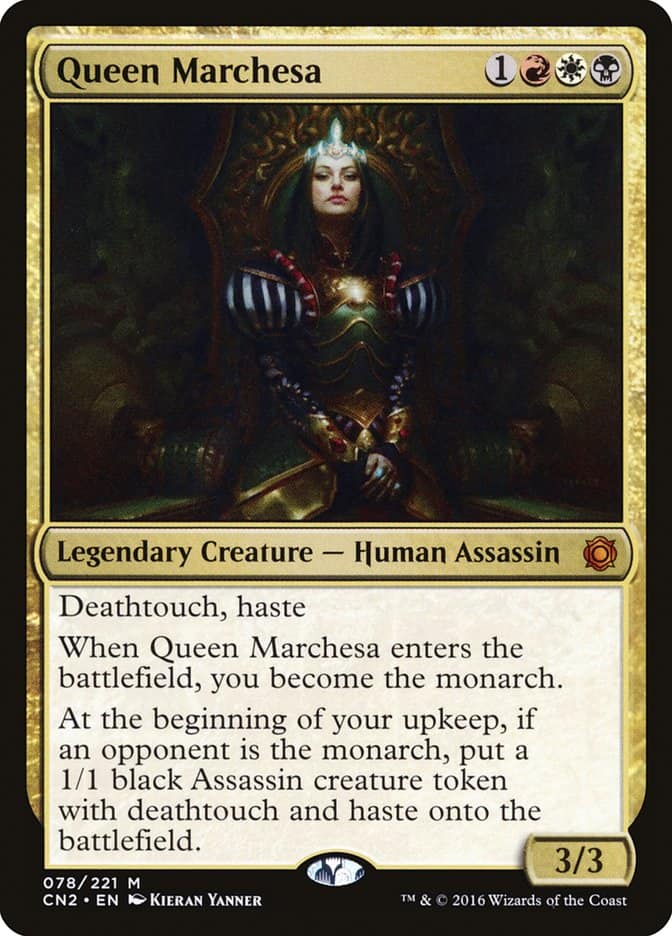
How do you Become the Monarch?
There are two main ways to become the Monarch during a game. A card that states a condition where you become the monarch is the first way to become monarch, and is the only way if the role has not been introduced into the game yet. If no one is monarch, you must play a card that grants you that designation in order to get the monarch status.
As stated above, a classic example of a card that would do this is Queen Marchesa. This card allows you to become the monarch when it enters the battlefield.
If a player is currently the monarch and you play a card that designated you as the monarch, the other player immediately loses their status as monarch, and you take over the role and associated abilities.
The second main way to become the monarch is to take it from the current monarch through combat. If a creature you control inflicts combat damage on the current monarch, the title will immediately switch over to you. This gives an opportunity for the monarch to switch potentially every turn even if there are not a lot of monarch cards involved.
There is a third, less common, way for a player to become the monarch. If the current monarch leaves the game, typically one of the remaining players will become monarch. Whoever is the active player when the monarch leaves will take the role from the dead player. This method of becoming the monarch is a lot more difficult to strategize around, and will obviously happen less often.
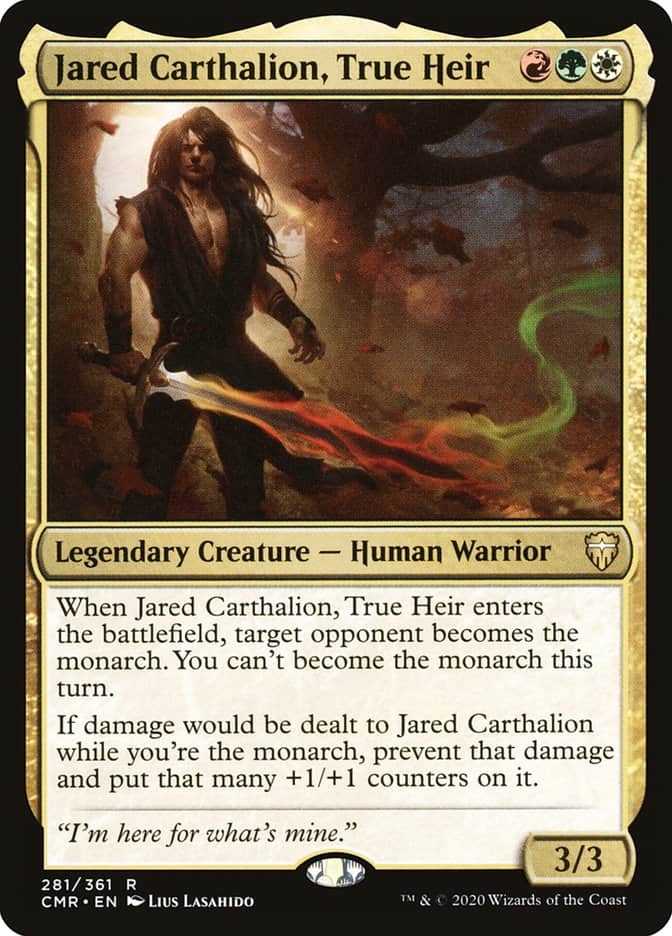
Is Monarch Legal in Commander?
The Monarch is definitely legal in commander MTG.
In fact, it works really well for Commander and can be a really successful choice. To play with the monarch in a commander game, you will want to choose a legendary creature monarch card to be the commander of your deck.
Either Queen Marchesa or Jared Carthalion, True Heir would be possible commanders. They are both legendary creatures that grant you status as the monarch when they enter the battlefield.
Queen Marchesa is a human assassin and is red, white, and black. Jared Carthalion, True Heir is a human warrior and has the colors red, green, and white. Choose which legendary you want to be your commander based on their colors since that will dictate the possibilities for your other 99 cards.
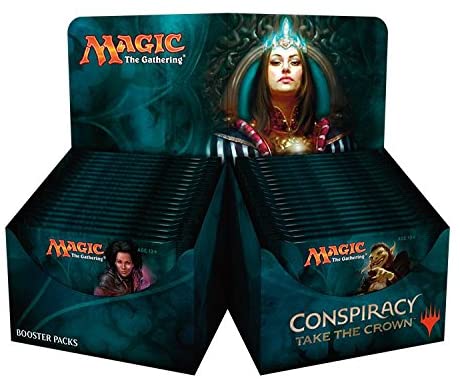
Is Monarch Legal in Modern MTG?
Modern is another possible format when playing MTG Monarch decks.
The two sets that include cards with the monarch mechanic, Conspiracy: Take the Crown and Commander Legends are both considered non-standard sets.
Even though both these sets were released after the eighth edition, they are not legal because they are not standard. No one would be able to become monarch in a game of Modern because the cards that facilitate the mechanic are illegal in those games.
Is Monarch a Good Mechanic?
Monarch and the associated cards are not going to be staple cards that you want to include in most decks.
Using the monarch is a very specific sort of strategy that is only legal in some formats, and will only be successful and interesting in specific types of games. People don’t buy Conspiracy: Take the Crown or Commander Legends sets to help them build a basic and comprehensive base of cards for their decks.
That being said, people do buy monarch cards if they love political, multiplayer games. The monarch mechanic fits into a pretty specific niche of strategy, but it is very successful when used correctly.
Introducing the monarch can be very successful when supported by the right cards. It can also change and control the flow of the game in a potentially advantageous way. Being familiar with monarch cards and knowing when to include them in your deck can be very fun and very productive.
Monarch is definitely a good mechanic if you are playing commander MTG. The Commander Legends set was specifically intended for the commander format. This set will give you great building blocks for a successful run at commander MTG.
The monarch will function well in most multiplayer games. The number of players will make a difference in strategy since the monarch can easily switch between players. If you are including monarch cards in your deck for a multiplayer game, make sure you take into consideration the number of players. Fewer players will likely mean more time as the monarch. The other cards you include in your deck can help you create an appropriate strategy for whatever number of players are in the game.
Be prepared for the effects that the monarch will have on a game and be prepared to take advantage of them. Introducing the monarch will definitely incite action and combat from other players. It will shift the focus of the game and may also introduce alliances.
What Happens to the Monarch When the Player Leaves the Game?
When a player loses and leaves the game, all of their objects and associated effects also leave the game. But what happens if they were the monarch?
There are a few different possibilities based on various possible circumstances. Most commonly, whoever is the active player when the monarch leaves the game will then become the monarch immediately at the time of leaving.
If for some reason there isn’t an active player when the monarch leaves, whoever is next to be active player will become the monarch, following turn order. Basically, whoever’s turn it is or whose turn it is next, gets to take over the player designation from the losing player that left the game. This means that if a monarch dies on their own turn, the player who takes the next turn becomes monarch.
There is a small possibility of the monarch leaving the game along with the player. If none of the remaining players are able to become the monarch because of circumstantial cards or other applicable rules, the monarch leaves the game. No one will take over the role, it will simply cease to be a part of the game.
Of course, someone could still be designated as the monarch even after it has left the game if they meet the conditions on a card that declares them to be the monarch.
